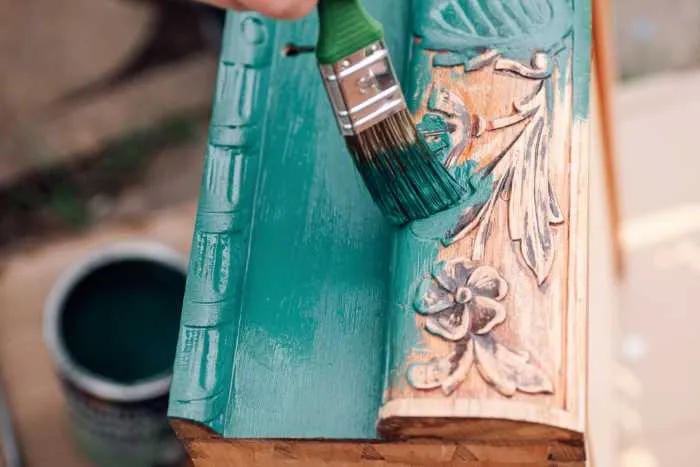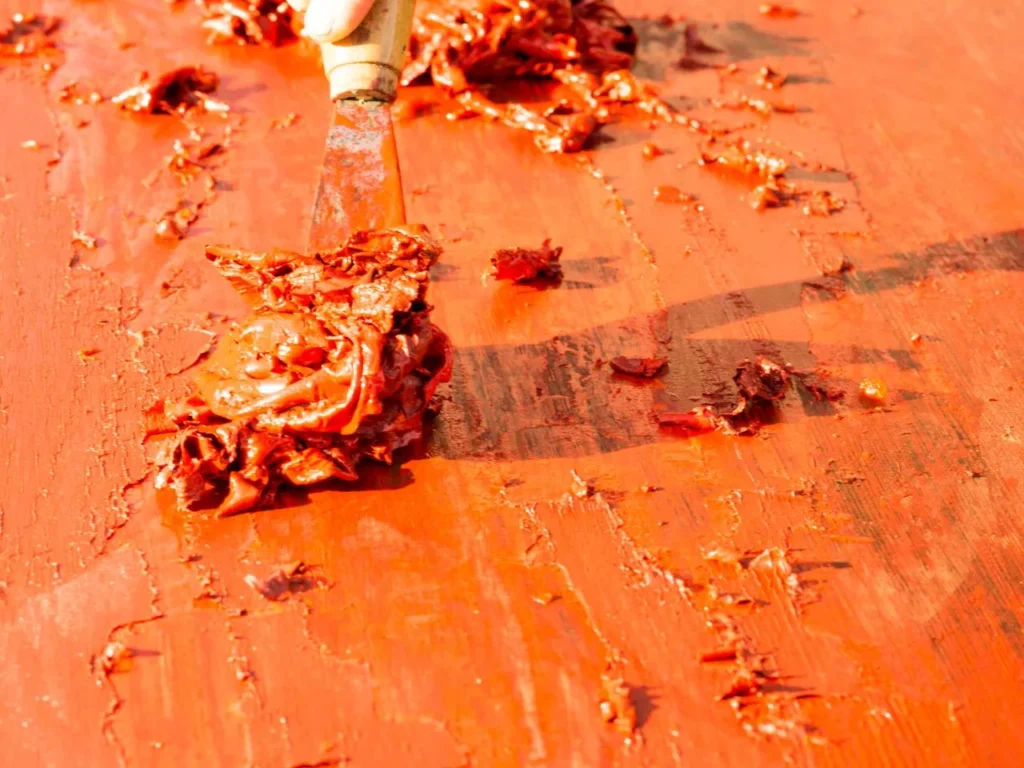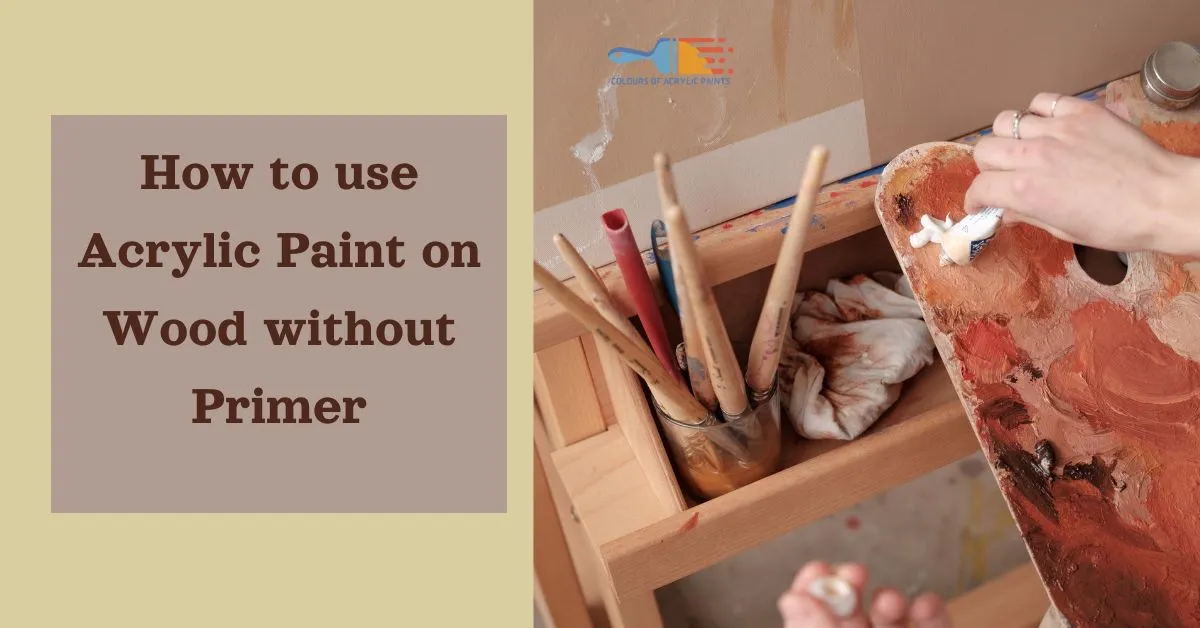Many people are tired of the hassle of applying primer before using acrylic paint on wood. All they wish there was a way to skip this step and still achieve vibrant, long-lasting results. In this article, Let’s explore the innovative techniques and tips for using acrylic paint on wood without primer.
Acrylic paint basics and wood surface preparation
When it comes to using acrylic paint on wood without primer, the key lies in thorough surface preparation.
Smooth and even surface for Optimal Adhesion
To ensure optimal adhesion and longevity of the paint, it’s essential to start by sanding the wood to create a smooth and even surface. This not only helps the paint adhere better but also minimizes the risk of peeling or chipping over time.
Sand the wood surface to create a smooth texture for the paint to adhere.
Clean Surface
Wiping down the wood with a damp cloth can help remove any dust or debris, ensuring a clean canvas for your creativity.
Many artists have found success in applying multiple thin layers of acrylic paint directly onto prepared wood surfaces.
By allowing each layer to dry completely before adding another, you can gradually build up rich colors and textures without compromising the natural beauty of the wood underneath.

Different Techniques to use acrylic paint on wood without Primer
When it comes to applying acrylic paint directly on wood without primer, there are several intriguing techniques to explore.
By experimenting with these various techniques, artists can unlock endless possibilities for transforming wood into vibrant and dynamic pieces of art. Whether aiming for a rustic charm or contemporary flair, utilizing acrylic paint directly on wood offers an abundance of creative opportunities.
Diluting Acrylic Paint with Water
One method involves diluting the acrylic paint with water, allowing for a transparent and watercolor-like effect that showcases the natural grain of the wood.
Use Dry Brush
Another approach is to use dry brushing, which involves applying a minimal amount of paint using a dry brush to achieve a weathered and distressed look.
Sponges or Palette knives
Use sponges or palette knives can create unique textures and patterns on the wood surface, adding depth and visual interest to the artwork.
This approach provides a cost-effective way to breathe new life into old wooden surfaces while embracing the organic characteristics of the material.

Tips for achieving best results without primer
When it comes to using acrylic paint on wood without a primer, there are a few key tips to keep in mind for achieving the best results.
Wood surface must be clean
Ensure that the wood surface is clean and free of any dust or debris before starting the painting process. This will help the acrylic paint adhere more effectively and result in a smoother finish.
High-quality acrylic paints
Consider using high-quality acrylic paints that have strong adhesive properties, which can help compensate for the lack of a primer.
Allow each paint layer to fully Dry
By using thicker layers of paint and allowing each layer to fully dry before applying the next, you can enhance the durability and vibrancy of your artwork on wood.

Lightly sand the wood surface before painting
Another useful tip is to lightly sand the wood surface before painting to improve adhesion and create a slightly rough texture for better paint grip.
This simple step can make a significant difference in how well the acrylic paint adheres to the wood, ensuring a longer-lasting and professional-looking result without needing a traditional primer.
Sealants and finishes for protecting the painted wood
When it comes to protecting painted wood, sealants and finishes play a crucial role in preserving the beauty and longevity of the surface.
While acrylic paint is a popular choice for wood projects, using it without a primer can lead to issues with adhesion and durability.
Sealant
This is where sealants come into play, providing a protective layer that not only enhances the appearance of the paint but also safeguards it from wear and tear.
Use of water-based polyurethane as a Finish
One interesting perspective to consider is the use of water-based polyurethane as a finish for painted wood. This versatile option not only offers excellent protection but also dries clear, allowing the true color of the paint to shine through.

Different Sheens
Experimenting with different sheens, such as satin or gloss, can add an extra dimension to your finished wood project while ensuring its longevity.
Understanding the specific environmental conditions your painted wood will be exposed to can help determine the most suitable sealant or finish.
Whether it’s UV resistance for outdoor pieces or moisture resistance for items used in kitchens or bathrooms, tailoring your choice of protection to match these factors can make all the difference in maintaining the integrity of your painted wood surfaces.
Read also about
Common issues when painting without primer
When painting with acrylics on wood without primer, it’s important to consider the potential issues that may arise.
Poor adhesion
One common problem is poor adhesion, leading to peeling and flaking of the paint over time.
Solution
- To troubleshoot this, thoroughly clean and sand the wood surface to create better paint adhesion.
- Applying a layer of gesso or acrylic medium before painting can help improve adhesion and prevent peeling.
Uneven absorption of the paint
Another common issue when skipping primer is uneven absorption of the paint by the wood, resulting in a blotchy or streaky appearance.
Solution
- Consider using thin layers of acrylic paint and allowing each layer to fully dry before adding more coats.
- This method helps to build up color gradually while minimizing uneven absorption and achieving a smoother finish on untreated wood surfaces.

Which Type of Paint is Best for wood?
When it comes to painting wood, many options are available, each with its unique benefits. Among the most versatile and popular choices is acrylic paint.
This water-based acrylic paint adheres well to wood surfaces, offering excellent coverage and a durable finish without the need for a primer in many cases.
Whether used for interior or exterior wood projects, the versatility and vibrant hues of acrylic paint make it an ideal choice for achieving stunning results without the hassle of using a primer.
Is Acrylic paint waterproof?
The nature of acrylic paint – when it dried, forms a water-resistant layer that can withstand light moisture. This doesn’t make it completely waterproof.
If exposed to prolonged or heavy moisture, acrylic paint can still be compromised.

Conclusion
Using acrylic paint on wood without primer is possible and can yield beautiful results with the right techniques. By properly preparing the wood surface and applying multiple thin coats of paint, you can achieve a smooth and durable finish. It’s important to note that using a primer may still be beneficial for certain types of wood or for achieving specific effects.
Experimenting with different application methods and sealants can also help enhance the final outcome. With practice and patience, you can master the art of using acrylic paint on wood without primer to create stunning works of art or decorative pieces. Embrace the process and enjoy exploring the possibilities of this versatile medium on wood surfaces!

